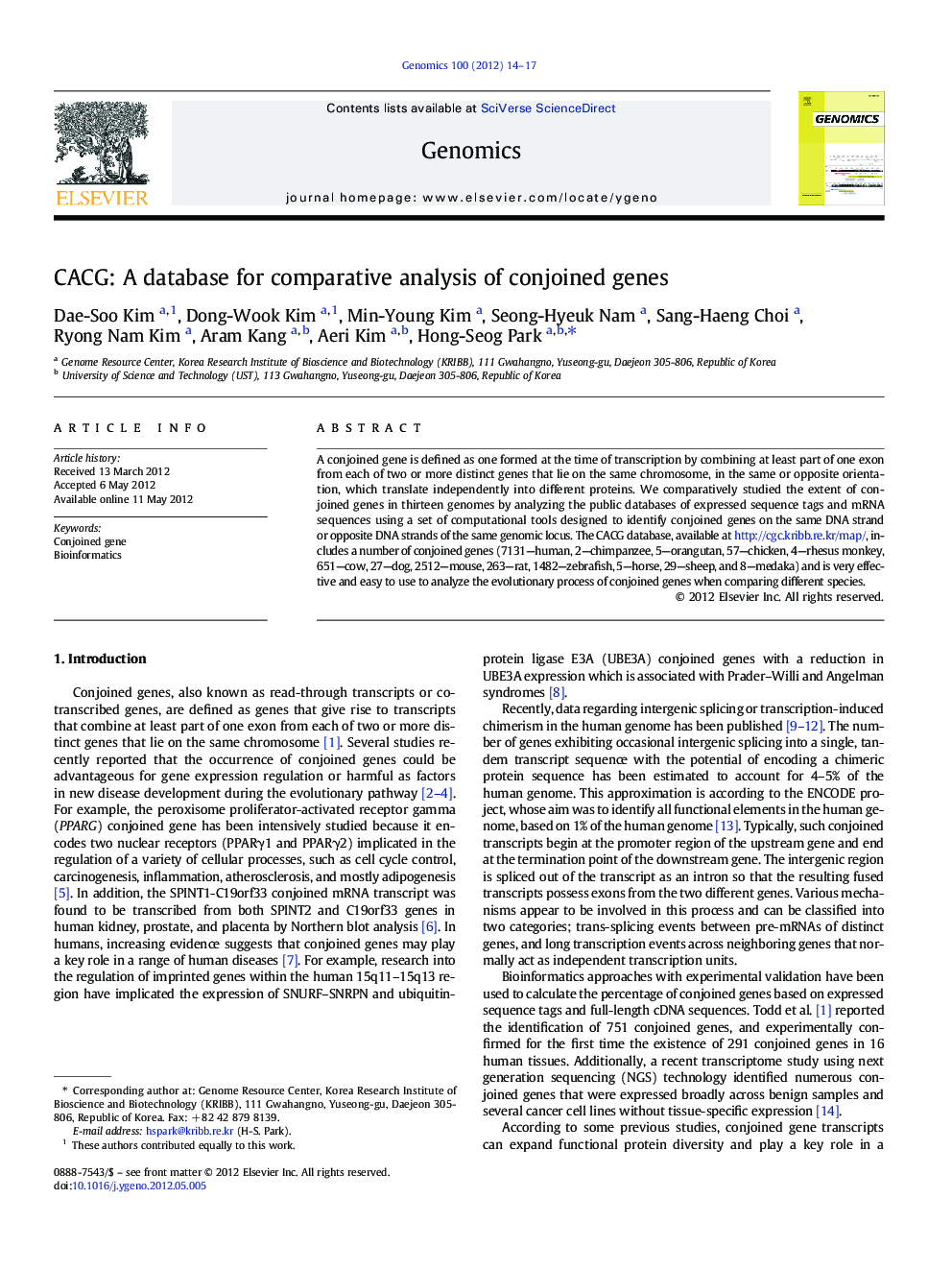| Article ID | Journal | Published Year | Pages | File Type |
|---|---|---|---|---|
| 2820977 | Genomics | 2012 | 4 Pages |
A conjoined gene is defined as one formed at the time of transcription by combining at least part of one exon from each of two or more distinct genes that lie on the same chromosome, in the same or opposite orientation, which translate independently into different proteins. We comparatively studied the extent of conjoined genes in thirteen genomes by analyzing the public databases of expressed sequence tags and mRNA sequences using a set of computational tools designed to identify conjoined genes on the same DNA strand or opposite DNA strands of the same genomic locus. The CACG database, available at http://cgc.kribb.re.kr/map/, includes a number of conjoined genes (7131—human, 2—chimpanzee, 5—orangutan, 57—chicken, 4—rhesus monkey, 651—cow, 27—dog, 2512—mouse, 263—rat, 1482—zebrafish, 5—horse, 29—sheep, and 8—medaka) and is very effective and easy to use to analyze the evolutionary process of conjoined genes when comparing different species.
► The CACG database is an integrated catalog of conjoined genes. ► Exploring the evolutionary relationship between conjoined genes ► The CACG supports all conjoined genes that are common in a subset of 13 genomes. ► The CACG database is very effective and easy to use for conjoined genes analysis.
